[unable to retrieve full-text content]
Gala (GALA) To Sponsor A Dubai Workshop, The Sandbox (SAND) Collaborates With Toei Animation And TMS ... Analytics Insightfrom "workshop" - Google News https://ift.tt/dnCKaH3
via IFTTT
[unable to retrieve full-text content]
Gala (GALA) To Sponsor A Dubai Workshop, The Sandbox (SAND) Collaborates With Toei Animation And TMS ... Analytics Insight
Get the tools necessary for financial fitness and freedom at the New Orleans Public Library’s People’s Housing + Financial Literacy Workshop, an eight-week series designed to share the importance of saving, budgeting, credit and financial independence.
The first session will cover an introduction to financial management.
The library is hosting this workshop at two locations — the East New Orleans Regional Library, 5641 Read Blvd., at 11 a.m. on March 4, and the Nora Navra Library, 1902 St Bernard Ave., at 1 p.m. on March 7.
Both workshops will cover the same topics.
Access to the Google platform and a Gmail account and required, and participants are encouraged to bring laptops or tablets. Sign up at events.nolalibrary.org.
YOGA: Stop by the Rosa F. Keller Library & Community Center, 4300 S. Broad St., at noon March 1 for “Ohm My Goodness,” a free 30-minute yoga class taught by the Ohm Well.
The class is accessible to all skill levels and promotes body positivity and inclusivity.
Space is limited to 10 participants, and the class will be filled on a first-come, first-serve basis.
The library will host another Ohm My Goodness class at noon March 8 at the Nix Library, 1401 S Carrollton Ave.
Details at nolalibrary.co/ohm.
BOOK CLUB: Algiers Regional Library’s West Bank Book Club will meet at 4 p.m. on March 1 to discuss Bonnie Garmus’ “Lessons in Chemistry,” which follows single mother Elizabeth Zott, a brilliant chemist trying to make a name for herself in the male-dominated world of the 1960s.
The West Bank Book Club meets on the first Wednesday of the month, unless otherwise noted. New members are always welcome.
Email Simon Hand at shand@nolalibrary.org for more information.
YOUNG ARTISTS: Experience art and nature at the library’s newest early literacy program, Budding Artists.
Designed for children ages 2-5 years old, Budding Artists combines sustainable art projects with stories inspired by nature. Participants will get their hands dirty while exploring painting, planting and observing themes in nature.
Presented in partnership with NOLA Artist Incubator, Budding Artists will be held at the Norman Mayer Library, 3001 Gentilly Blvd., at 10:30 a.m. every Thursday in March. Space is limited, and registration is required. Visit events.nolalibrary.org to sign up.
DIGITAL FOR SENIORS: Learn how to protect your personal information online at Digital Skills for Seniors 50+, a workshop series running through 2023.
The New Orleans Public Library has partnered with the AARP Foundation, Older Adults Technology Services and the Friends of the New Orleans Public Library to present the series.
The next installation will cover tips for staying safe in cyberspace, safe browsing, recognizing online scams and when it’s OK to share personal information.
Upcoming dates and locations are:
Call or text (504) 224-8720 for more information or with help signing up for a class.
Jane LeGros is the director of marketing and communications for the New Orleans Public Library.
The Federal Trade Commission (FTC) and the Department of Justice (DOJ) hosted a two-day workshop last week for this year’s senior meeting for the Asia-Pacific Economic Cooperation (APEC). It’s been 12 years since the United States last hosted APEC, and President Biden’s administration will be hosting three additional APEC meetings later this year as well.
The workshop invited experts in courtroom advocacy, antitrust policy, and economic competition to give presentations and roundtables focused on tailoring economic legislation for a dynamically changing world. FTC Commissioner Rebecca Kelly Slaughter opened the workshop by emphasizing innovation and interconnectedness as cornerstones of global economic collaboration.
Sources: Federal Trade Commission

Rock Rapids, Iowa – Swine producers and building managers are invited to participate in “Managing Your Unseen Employee: The Ventilation System” on March 13-14, from 10 a.m. to 2 p.m. daily in rural Larchwood.
Hosted by Iowa State University Extension and Outreach and the Iowa Pork Producers Association, the two-day training covers ventilation basics on the first day with hands-on troubleshooting and practicing on the second day.
The hands-on learning component is centered in a 24-foot trailer equipped with a functioning ventilation system that demonstrates fan, inlet and controller management, according to Dave Stender, swine specialist with ISU Extension and Outreach. Stender says that allows participating swine producers and barn managers to troubleshoot problems and practice real life scenarios without compromising biosecurity by going into an active production facility.
Stender said that program participants should plan for some classroom-style learning, but mostly hands-on learning and question-and-answer time.
Participants will practice adjusting inlets, measuring static pressure effects, setting fan controllers, observing plugged inlet effects, troubleshooting problems, answering questions and looking at real-life case studies of barn problems, according to Stender.
There is no registration fee for the program as program and material costs are being fully sponsored by the Lyon County Extension Council, with noon meals sponsored by Boehringer Ingelheim.
However, preregistration is required due to limited space and supplies. Preregister to Carly via phone at 712-472-2576 or email cherum@iastate.edu.
Both days of the workshop will be hosted at 1940 110th St., Larchwood.
Further questions can be directed to Stender at 712-225-6196 or dstender@iastate.edu.
[unable to retrieve full-text content]
Stormwater workshop seeks for residents opinions khqa.comBio:
Thadeus Greenson is the news editor of the North Coast Journal.
Atomic Heart's initial fetch quest has you searching for four separate canisters to open the door out of the Valilov Complex at the beginning of the game. Each of the canisters is located in a different wing: the Pesticide Workshop, the Cold Workshop, the Hot Workshop, and the Algae Workshop.
RELATED: Atomic Heart Review - A Weak Pulse
Each of these workshops can only be entered after completing a number of puzzles and defeating multiple enemies. Here's a step-by-step walkthrough for each Workshop.
First up, the Algae Workshop. This is an area swarming with Sprouts & evolved Sprouts, essentially humans that have been taken over by the parasitic plants. They shamble like zombies, and can easily be dispatched.
The initial part of this area is very straightforward: simply follow the marker until you enter a large plant room with multiple pools and central platforms. Swim up the Polymer and begin the process to speed up the motors.
Halfway around the room, the engine of your platform will stop, and you will need to reboot it by completing this puzzle. Rotate the middle section of the puzzle (the splitter), as shown in the image below.
Return to the platform, defeat the flying robots, and collect the canister from the centre of the room. Nice job, you've acquired one of four canisters.
Next up, follow the markets towards the Hot Workshop. Here, you'll need to cool down three boilers by moving the blue coolant balls via tubes into three overheating boilers.
This is relatively straightforward, you just need to follow the tubes to the boilers. If you do get stuck, take a step back and look at the tubes before moving the balls along. Each one is easy to follow once you get a full picture.
Once you've completed this puzzle, complete some parkour to access the canister by jumping on to the forklift, using your shock to move the forklift, and jumping up on the platorms.
This part of the quest has you clearing out hundreds of Sprouts as they to enter into the spinning fans above you. The fans will change color to red if you need to restart the fans using your shock ability.
Most of this mission is extremely straightforwards. Just make sure to use your Shotgun or Pistol (or other equipped ranged weapon) to clear out the flying enemies.
Although it is simple, it actually lasts quite a long time. You will need to keep killing enemies until you get the prompt to retrieve the canister from the control room.
Here, you'll encounter an extremely large and very angry tree. You need to deliver the canister via the train by completing some puzzles.
The train with the canister on will get stuck in front of some debris. Parkour your way up the platforms behind the train to change the direction of the track. Climb up the stairs and then use Telekinesis to move the platform over the train so that you can jump to the next terminal.
Once you've moved the canister train into the next room, jump onto the middle partition and move the canister along. Use Telekinesis to move the next platform (go talk to the Romantic Dead on the left if you're going after the achievement), follow the hallway around, jump over the spinning platform, and move the canister to the next location.
Move the train along, then use the small yellow box to jump to the next terminal. Dash across, move the train, then complete the final terminal by climbing up the platforms and wreckage. Send the canister into the tree & complete this part of the mission.
Before you can exit the area with the train canister, you will need to defeat a mini-boss, the Large Mutant. Essentially a tankier version of a regular mutant, this boss also has a ranged attack that will slow you and a charge attack you need to dodge, otherwise it will knock you down. Destroy the spawners on the walls if you want to make the fight easier with fewer flying mobs.
NEXT: Why Are You Covering Atomic Heart When You Boycotted Hogwarts Legacy?
Before you can exit the Vavilov Complex and finally explore the world of Atomic Heart, you will need to get the Polymer Canisters from Cold Workshop and Pesticide Workshop first. Since both objectives are part of one quest, this guide will tell you how to get both the Cold and the Pesticide Workshop Polymer Canister in Atomic Heart.
Video courtesy of WoW Quests.
First, you need to solve a small puzzle involving cows, pigs, and chickens in tubes:
Once done, watch the horror unfolds. Then a door will open and invites you to a hall with huge fans on the ceiling. Follow the waypoint and go up the stairs to the left to find the Polymer Canister in a control room.
Here you will have to solve the power-activation laser relay puzzle to activate the Workshop’s power (duh):
The Polymer Canister will start to fill, but some Sprouts will interrupt it. Destroy them, avoid enemies trying to gang up on you, and restart the fan using the glove’s Shok attack. Head back to the control room and hit the button again. To reactivate a fan, run toward the one that glows red. It’s important to prevent three fans from shutting down at the same time, as doing so will require resetting the filling process from the control room. Keep in mind that restarting the Canister filling process will respawn the enemies.
After the Canister is filled, Charles will notify you. Grab the Canister and deliver it to the gates by following the waypoint.
A Scientist NPC will ask you to get the Polymer Canister from the Pesticide Workshop. Keep following the way until you see a yellow train cart. We need to move it using the control panels:
Now the Pesticide Canister will be sent to the chamber and destroy the plant; the Pesticide Canister is obtained during the cutscene. Defeat all the enemies and the large mutant to complete this room.
Atomic Hearts is available on PlayStation 4, PlayStation 5, Xbox One, Xbox Series X|S, and PC via Steam.

The Justice Department and the Federal Trade Commission (FTC) today launched a two-day joint workshop as part of this year’s first Asia-Pacific Economic Cooperation’s (APEC) Senior Officials Meeting, which the U.S. is hosting in Palm Springs, California. This year marks the first time the U.S. has hosted APEC since 2011.
The Justice Department’s Antitrust Division and the FTC organized and hosted the workshop on competition advocacy for APEC’s Competition Policy and Law Group (CPLG) to build on the APEC 2023 priorities, including promoting competitive markets throughout the Asia-Pacific region and fostering cooperation across APEC’s 21 economies in service of this goal.
“The APEC’s Competition Policy and Law Group workshop provides an opportunity to engage with our partners in the Asia-Pacific region,” said Assistant Attorney General Jonathan Kanter of the Justice Department’s Antitrust Division. “Promoting competition in an increasingly complex world demands an interconnected and innovative approach to international antitrust enforcement, and this workshop is an important forum for building the ties and strategy necessary for this cooperation.”
The workshop began with opening remarks from Assistant Attorney General Kanter and FTC Commissioner Rebecca Slaughter. The workshop featured presentations and roundtable discussions on litigating competition matters, regulatory advocacy and effective legislative advocacy in a changing world. Deputy Assistant Attorney General Hetal Doshi, who leads the Antitrust Division’s Litigation Unit, kicked off the workshop with a presentation sharing best practices for courtroom advocacy. Deputy Assistant Attorney General Maggie Goodlander, who oversees the Antitrust Division’s International, Appellate, and Policy Sections, led a panel with judges and competition agency leadership from the United States, Chile and Peru.
APEC is the premier platform for advancing economic policies in the Asia-Pacific region that promote inclusive and sustainable growth, as well as free, fair, and open trade and investment. In addition to this week’s meeting in Palm Springs, the U.S. will host APEC Senior Officials Meetings in Detroit (May 2023) and Seattle (August 2023), as well as APEC’s Economic Leaders’ Week in San Francisco (November 2023).

RALEIGH, N.C. (WTVD) -- An eager crowd of youngsters and parents filled a room inside the John Chavis Community Center in Raleigh for Saturday's Black Inventors Workshop.
They listened attentively as Madison Phillips, a recreation programs analyst with Raleigh Parks, Recreation and Culture fired up a computer and shared stories about significant inventions by African Americans.
The lesson was greatly appreciated by Monica Hasan, a mother of two boys.
"It would be nice to know there are people who look like them (who came up with ideas) that we use today," said Hasan. "And maybe you could use something that we could be using or humanity could be using hundreds of years from now, too!"
Minutes after the visual presentation of Black inventors, organizers took the group outside for an opportunity to connect fresh air and fun to what they learned so far by playing Red Light Green Light.
"A game to honor Garrett Morgan, the inventor of the stop lights." Phillips said. "He invented the caution signal, or the yellow light!"
Activities and hands on opportunities could encourage interest in STEM studies among the group.
"We're going to give them a prompt to invest something that makes life a little bit easier. They're going to use scraps from The Scrap Exchange out of Durham," said Phillips. "They have ideas, and we can't give them enough credit sometimes!"
Some may be slightly ahead of their time, like young Ethan McCoy's response when asked if he has any ideas that he'd like to invent someday.
"Probably a teleporting machine, that can teleport you away from danger," he said.
But on this Saturday, he and the other youngsters are encouraged to dream big and develop ideas using available materials.
Copyright © 2023 WTVD-TV. All Rights Reserved.
In 2016, I was no longer interested in teaching the traditional workshop and felt that my students no longer wanted it. A poet mentioned that in their workshop, they read the poem on the spot and then discuss it together. This was mind-blowing. No reading and re-reading in the week before? No 500-word response letters to the writer? I felt the sky above me open, sunshine lighting the path to a workshop that might encourage more levity and play.
Another poet I’d talked to years ago told me about a conceit assignment that they do with their students (I cannot remember who this was—please let me know if you recognize the assignment so I can credit you!). The idea: Commit to writing poems around a single topic, idea, question, or theme, for the entire semester. This provides a constraint, which, as most writers know, can be both a great source of anxiety and creativity.
As a writer, I love a constraint; years ago, I had fun writing a series of linked CNF flash pieces one by one, every day, which I later fictionalized and wove through with found text. I’d seen my students produce some of their most miraculous work from short assignments, which often later became the central nuggets or jumping-off points for longer works.
So, when I was looking for ways to upend the workshop, I decided to design an undergrad course around a semester-long nonfiction short short/flash conceit that would become a chapbook. Students would choose a single subject around which to write all semester, workshop a “micro-essay”—inspired by Nicole Walker’s Micrograms—per class.
We’d read the pieces on the spot, and respond either to the writer’s questions or with what stood out as most compelling and powerful, in no more than six minutes per piece (the writer was always free to jump in as they liked). As we read during the semester, we’d study chapbooks as objects, thinking about design elements—paper choices, fonts, color, image+text pieces, etc. Students would revise and arrange their chapbooks in the second half of the semester, with the idea that they could choose to submit their creative nonfiction chapbook for publication. The next semester, I took this to my graduate students.
Krys Malcolm Belc was part of that first graduate class, wrote a chapbook in the class that went on to win the Cupboard’s contest, and began teaching a similar class this year in a six-week community workshop for Catapult. We chose some of our favorite reading assignments that inspire students and keep us all writing. Some of these are chapbooks, some are books that offer lessons we can apply to the chapbook and micro-essays/lyric essays/flash nonfiction—however you prefer to classify them… They’re all fantastic reads.
–Rachel May
*
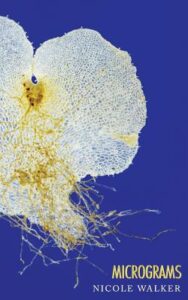
Micrograms by Nicole Walker
When I began designing the chapbook conceit class, this is the book that became my model. It’s a beautiful definition, in itself, of how a creative nonfiction conceit can work as a series of “micro-essays.” Walker focuses on my favorite themes: the environment, parenting, science, love, and her intense focus, like Lydia Davis’, is transfixing. You can’t look away. It’s like studying the world through, as David Lazar says, a microscope—but one with a vast, zoom-able view of the world. (Please also read the magnificent Egg and the new edition of Bending Genre, which is about books that fit neither here nor there and will delight you.)
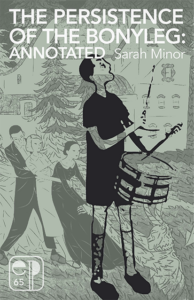
The Persistence of the Bonyleg by Sarah Minor
This is another of my favorites to teach because of how students first find themselves flummoxed and then enamored. There’s a talking stump, the story is told in two columns with dialogue written like a script. It’s confusing, and delightful. After we start the chapbook, we watch a documentary about the Lykov family (who live in the remote Russian wilderness, undiscovered for decades), read an article about their history, and then students write their own “fairytale-essays,” with fabulist elements, in the same form as Minor’s. Students get really playful and start to challenge the edges of nonfiction, to find what creative nonfiction can do. This one is published and available free online (magical) by Essay Press; their chapbooks and books (especially Mary-Kim Arnold’s Litany for the Long Moment) have been so much fun to teach.
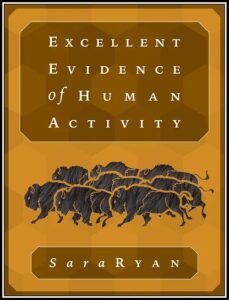
Excellent Evidence of Human Activity by Sara Ryan
Along with Walker’s Micrograms, I teach from this chapbook for two reasons: 1.) it’s good! and 2.) a lot of people who don’t read and write in poetry aren’t very familiar with chapbooks, which seem to be one of the best ways to highlight experiments that can’t go on for hundreds of pages. The Cupboard Pamphlet’s flash chapbooks are little and boxy and stylish and widely varied in their style and subject matter. Ryan’s work placing her millennial loneliness in the context of death and destruction of the earth is perfectly suited for the flash chapbook form.
[KMB] Back in 2016, Krys and Sara were students in that first graduate class I taught focusing on the semester-long micro-essays-as-chapbooks, so of course, it’s a joy to teach their work and have them talk with students about how to write a chapbook. I’m In Transit, Krys explores stories of transit that become metaphors for family, identity, transition, and the longings and triumphs translocation. And, I, too, love Sara’s language, which swirls around insects, death, destruction of the land, and other anthropocene themes that may be prose/may be poetry but are completely enticing.].
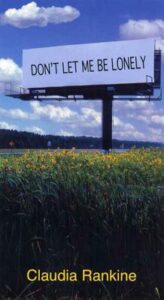
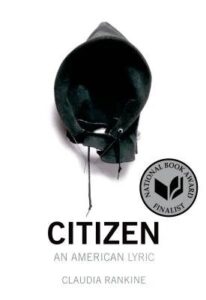
Don’t Let Me Be Lonely & Citizen by Claudia Rankine
These aren’t chapbooks, but they’re irresistible examples of how to weave together a book of nonfiction in shorts. Some people call them lyric book-length essay. Some call them poetry. No matter how you slice it, they’re brilliant books that will make you ask yourself about your relationships with family, language, and race in America. (Plus, I love how Claudia Rankine talks about image+text in Citizen in this great talk at the Woodberry Poetry Room.)
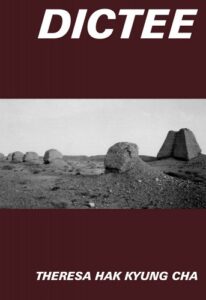
Dictée by Theresa Hak Kyoung-Cha
This book, like Rankine’s work, is groundbreaking and offers lessons with every reading. I’ve taught it for years, and many students at first resist the challenges its form offers—and then find themselves inspired. Kyoung-Cha writes in fragmented language that she weaves together to tell a story of immigration, her mother tongue and ancestors, and mythological figures including Persephone and Yu Guan Soon. Not so unlike our beloved Sebald, who would publish his most celebrated image+text books a decade after Dictee came out in 1982, Kyoung-Cha blends time and uses uncaptioned images to create a sense of endless story-time.
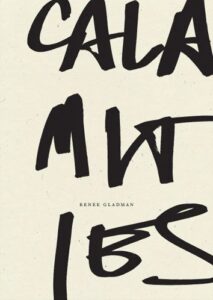
Calamities by Renee Gladman
This Renee Gladman essay collection is weird, hypnotic, speculative, and repetitive in a way that I hope can give writers a sense of writing momentum. Each of the essays begins, “I began the day,” and takes off in a direction no reader could predict. In an interview with Lucy Ives, Gladman called the essays “ditties”: “I call them ditties because they feel less like they’re trying to travel; there is just one point that gets made in a quick circle.” Flash collections have a powerful chance to push against the narrative impulse and this book is a great example of work that circles around and around.
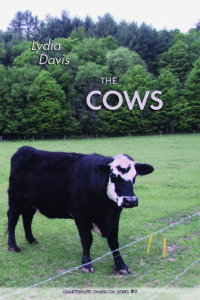
The Cows by Lydia Davis
Lydia Davis is one of our contemporary flash elders–a master of the form (and a bonafide genius). So, I have to include her work whenever I teach the nonfiction conceit class (please also read her longer collections of shorts). This chapbook is funny and odd and everything you’d expect from Lydia Davis’ piercing observations of the world around her–language boiled into tiny crystalline rainbow-makers.
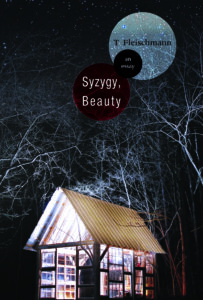
Sygyzy, Beauty: An Essay by T. Fleischman
This already seems like a classic. I love it because of how Fleischman wrangles the address of a lover into a series of flashes, so that it becomes a portrait of the speaker. That trick of focus reminds me a lot of Jenny Boully’s The Body: An Essay, which is a small volume written in footnotes. The white space of the page is tantalizing, and maybe where the truth of the love story she’s telling lies.
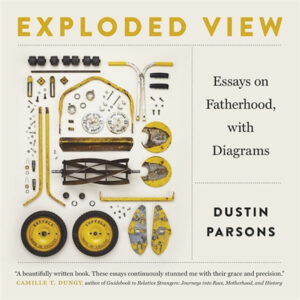
Exploded View: Essays on Fatherhood, with Diagrams by Dustin Parsons
This collection is really nice for students to encounter because while many of the essays are about childhood memories growing up as the son of an oilfield mechanic, others are very much grounded in the “dailyness” of Parsons’s present-day life as a partner and father. It’s a visually unusual book. Parsons uses everything from schematics to hand-drawn images to support his essays. I have a lot of luck teaching his craft essay “Dustin Parsons on Dropping Off”–which shows and cites his essay “Drop Off.”
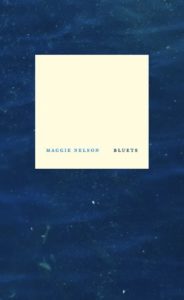
Excerpts from Bluets & Jane, A Murder by Maggie Nelson
We always look at least an excerpt from Bluets and often from Jane, as well. I read Jane, then became completely engrossed when I read The Red Parts. That pairing of books is such a cool example of what can happen when a writer keeps moving with a subject that’s under transformation–the investigation of her aunt’s murder, the trial, and Nelson’s understanding of her aunt as a person and her family’s various responses to the murder. It’s like looking at a single subject through a kaleidoscope of archives, essays, and memories.
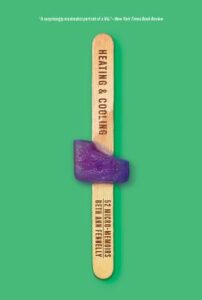
Heating and Cooling: 52 Micro-Memoirs by Beth Ann Fennelly
This is a standard-bearer in the genre for me. I like it because Fennelly is quite funny, and my syllabi tend to be pretty grim. The book’s 52 flashes have amazing range, but humor is so present in the book. It can be helpful for students—and me—to experience joy in reading this work. At the same time, there are some essays in it—like “I Survived the Blizzard of ’79”—that teache a lot about poignancy, and setting, and writing about memory. And I teach “11. And I’ve Been Searching Ceaselessly For You Ever Since, Mon Amor” along with other list essays to help students see what possibility exists in that kind of writing. And in this Electric Literature interview, Fennelly offers insight for writers looking to compile similar books:
“An early draft of the book had 100 pieces. My editor suggested I cut it down, not because any of the micro-memoirs were huge pieces of garbage, but because the book felt a little overwhelming. So I cut down pieces that seemed like outliers, thematically. I kept ones that focused on my central roles — wife, mother, writer, woman — and hoped the cuts allowed a kind of coalescing among these central roles. The book is in some ways about the choices we make in an effort to be happy.”
Online: Flash is largely an online world, in my experience both reading and writing it. There are a number of flash writers I read and follow regularly–like Dina Relles and jj peña–so if I am teaching a class with a wide variety of flash, I might rely on those writers’ works as well as some of the essays I’ve collected over the years that I think hold a lot of complexity and craft considerations for students trying to learn to write short essays–like “There Are Distances Between Us” by Roxane Gay, “I hoisted them, two drug dealers, I guess that’s what they were,” by Diane Seuss, and “Snowbound” by Natalie Lima.

RALEIGH, N.C. (WTVD) -- An eager crowd of youngsters and parents filled a room inside the John Chavis Community Center in Raleigh for Saturday's Black Inventors Workshop.
They listened attentively as Madison Phillips, a recreation programs analyst with Raleigh Parks, Recreation and Culture fired up a computer and shared stories about significant inventions by African Americans.
The lesson was greatly appreciated by Monica Hasan, a mother of two boys.
"It would be nice to know there are people who look like them (who came up with ideas) that we use today," said Hasan. "And maybe you could use something that we could be using or humanity could be using hundreds of years from now, too!"
Minutes after the visual presentation of Black inventors, organizers took the group outside for an opportunity to connect fresh air and fun to what they learned so far by playing Red Light Green Light.
"A game to honor Garrett Morgan, the inventor of the stop lights." Phillips said. "He invented the caution signal, or the yellow light!"
Activities and hands on opportunities could encourage interest in STEM studies among the group.
"We're going to give them a prompt to invest something that makes life a little bit easier. They're going to use scraps from The Scrap Exchange out of Durham," said Phillips. "They have ideas, and we can't give them enough credit sometimes!"
Some may be slightly ahead of their time, like young Ethan McCoy's response when asked if he has any ideas that he'd like to invent someday.
"Probably a teleporting machine, that can teleport you away from danger," he said.
But on this Saturday, he and the other youngsters are encouraged to dream big and develop ideas using available materials.
Copyright © 2023 WTVD-TV. All Rights Reserved.

RALEIGH, N.C. (WTVD) -- An eager crowd of youngsters and parents filled a room inside the John Chavis Community Center in Raleigh for Saturday's Black Inventors Workshop.
They listened attentively as Madison Phillips, a recreation programs analyst with Raleigh Parks, Recreation and Culture fired up a computer and shared stories about significant inventions by African Americans.
The lesson was greatly appreciated by Monica Hasan, a mother of two boys.
"It would be nice to know there are people who look like them (who came up with ideas) that we use today," said Hasan. "And maybe you could use something that we could be using or humanity could be using hundreds of years from now, too!"
Minutes after the visual presentation of Black inventors, organizers took the group outside for an opportunity to connect fresh air and fun to what they learned so far by playing Red Light Green Light.
"A game to honor Garrick Morgan, the inventor of the stop lights." Phillips said. "He invented the caution signal, or the yellow light!"
Activities and hands on opportunities could encourage interest in STEM studies among the group.
"We're going to give them a prompt to invest something that makes life a little bit easier. They're going to use scraps from The Scrap Exchange out of Durham," said Phillips. "They have ideas, and we can't give them enough credit sometimes!"
Some may be slightly ahead of their time, like young Ethan McCoy's response when asked if he has any ideas that he'd like to invent someday.
"Probably a teleporting machine, that can teleport you away from danger," he said.
But on this Saturday, he and the other youngsters are encouraged to dream big and develop ideas using available materials.
Copyright © 2023 WTVD-TV. All Rights Reserved.

SAN ANTONIO – The City of San Antonio, Neighborhood and Housing Services, is hosting workshops to help homeowners learn about lowering property taxes.
Free workshops will be held from Feb. through May 8 at various locations across the city.
The next free workshop will be held from 4 to 6 p.m. on Monday, Feb. 20, at Mission Branch Library, 3134 Roosevelt Ave.
Those looking to apply for a property tax exemption can get one-on-one assistance from legal experts at the events, a news release said.
At the workshop, there will be discussions concerning tips on preparing for an appeal with the Bexar County Appraisal District before the May 15 appeal deadline.
Those attending should plan to bring a driver’s license or state-issued ID.
If you inherited your home from a family member who has died and their name is still on the property records, you will need a copy of the prior owner’s death certificate, the property’s most recent utility bill, and, if possible a citation of any court record relating to your ownership of the property, ac news release said.
Upcoming Workshops:
Spanish and American Sign Language interpreters will be on-site at each session to help with translation services.
More information can be found online.
READ ALSO:
Homeowners seeking to apply for a property tax exemption can get one-on-one assistance from legal experts at the workshop
In 2016, I was no longer interested in teaching the traditional workshop and felt that my students no longer wanted it. A poet mentioned that in their workshop, they read the poem on the spot and then discuss it together. This was mind-blowing. No reading and re-reading in the week before? No 500-word response letters to the writer? I felt the sky above me open, sunshine lighting the path to a workshop that might encourage more levity and play.
Another poet I’d talked to years ago told me about a conceit assignment that they do with their students (I cannot remember who this was—please let me know if you recognize the assignment so I can credit you!). The idea: Commit to writing poems around a single topic, idea, question, or theme, for the entire semester. This provides a constraint, which, as most writers know, can be both a great source of anxiety and creativity.
As a writer, I love a constraint; years ago, I had fun writing a series of linked CNF flash pieces one by one, every day, which I later fictionalized and wove through with found text. I’d seen my students produce some of their most miraculous work from short assignments, which often later became the central nuggets or jumping-off points for longer works.
So, when I was looking for ways to upend the workshop, I decided to design an undergrad course around a semester-long nonfiction short short/flash conceit that would become a chapbook. Students would choose a single subject around which to write all semester, workshop a “micro-essay”—inspired by Nicole Walker’s Micrograms—per class.
We’d read the pieces on the spot, and respond either to the writer’s questions or with what stood out as most compelling and powerful, in no more than six minutes per piece (the writer was always free to jump in as they liked). As we read during the semester, we’d study chapbooks as objects, thinking about design elements—paper choices, fonts, color, image+text pieces, etc. Students would revise and arrange their chapbooks in the second half of the semester, with the idea that they could choose to submit their creative nonfiction chapbook for publication. The next semester, I took this to my graduate students.
Krys Malcolm Belc was part of that first graduate class, wrote a chapbook in the class that went on to win the Cupboard’s contest, and began teaching a similar class this year in a six-week community workshop for Catapult. We chose some of our favorite reading assignments that inspire students and keep us all writing. Some of these are chapbooks, some are books that offer lessons we can apply to the chapbook and micro-essays/lyric essays/flash nonfiction—however you prefer to classify them… They’re all fantastic reads.
–Rachel May
*

Micrograms by Nicole Walker
When I began designing the chapbook conceit class, this is the book that became my model. It’s a beautiful definition, in itself, of how a creative nonfiction conceit can work as a series of “micro-essays.” Walker focuses on my favorite themes: the environment, parenting, science, love, and her intense focus, like Lydia Davis’, is transfixing. You can’t look away. It’s like studying the world through, as David Lazar says, a microscope—but one with a vast, zoom-able view of the world. (Please also read the magnificent Egg and the new edition of Bending Genre, which is about books that fit neither here nor there and will delight you.)

The Persistence of the Bonyleg by Sarah Minor
This is another of my favorites to teach because of how students first find themselves flummoxed and then enamored. There’s a talking stump, the story is told in two columns with dialogue written like a script. It’s confusing, and delightful. After we start the chapbook, we watch a documentary about the Lykov family (who live in the remote Russian wilderness, undiscovered for decades), read an article about their history, and then students write their own “fairytale-essays,” with fabulist elements, in the same form as Minor’s. Students get really playful and start to challenge the edges of nonfiction, to find what creative nonfiction can do. This one is published and available free online (magical) by Essay Press; their chapbooks and books (especially Mary-Kim Arnold’s Litany for the Long Moment) have been so much fun to teach.

Excellent Evidence of Human Activity by Sara Ryan
Along with Walker’s Micrograms, I teach from this chapbook for two reasons: 1.) it’s good! and 2.) a lot of people who don’t read and write in poetry aren’t very familiar with chapbooks, which seem to be one of the best ways to highlight experiments that can’t go on for hundreds of pages. The Cupboard Pamphlet’s flash chapbooks are little and boxy and stylish and widely varied in their style and subject matter. Ryan’s work placing her millennial loneliness in the context of death and destruction of the earth is perfectly suited for the flash chapbook form.
[KMB] Back in 2016, Krys and Sara were students in that first graduate class I taught focusing on the semester-long micro-essays-as-chapbooks, so of course, it’s a joy to teach their work and have them talk with students about how to write a chapbook. I’m In Transit, Krys explores stories of transit that become metaphors for family, identity, transition, and the longings and triumphs translocation. And, I, too, love Sara’s language, which swirls around insects, death, destruction of the land, and other anthropocene themes that may be prose/may be poetry but are completely enticing.].


Don’t Let Me Be Lonely & Citizen by Claudia Rankine
These aren’t chapbooks, but they’re irresistible examples of how to weave together a book of nonfiction in shorts. Some people call them lyric book-length essay. Some call them poetry. No matter how you slice it, they’re brilliant books that will make you ask yourself about your relationships with family, language, and race in America. (Plus, I love how Claudia Rankine talks about image+text in Citizen in this great talk at the Woodberry Poetry Room.)

Dictée by Theresa Hak Kyoung-Cha
This book, like Rankine’s work, is groundbreaking and offers lessons with every reading. I’ve taught it for years, and many students at first resist the challenges its form offers—and then find themselves inspired. Kyoung-Cha writes in fragmented language that she weaves together to tell a story of immigration, her mother tongue and ancestors, and mythological figures including Persephone and Yu Guan Soon. Not so unlike our beloved Sebald, who would publish his most celebrated image+text books a decade after Dictee came out in 1982, Kyoung-Cha blends time and uses uncaptioned images to create a sense of endless story-time.

Calamities by Renee Gladman
This Renee Gladman essay collection is weird, hypnotic, speculative, and repetitive in a way that I hope can give writers a sense of writing momentum. Each of the essays begins, “I began the day,” and takes off in a direction no reader could predict. In an interview with Lucy Ives, Gladman called the essays “ditties”: “I call them ditties because they feel less like they’re trying to travel; there is just one point that gets made in a quick circle.” Flash collections have a powerful chance to push against the narrative impulse and this book is a great example of work that circles around and around.

The Cows by Lydia Davis
Lydia Davis is one of our contemporary flash elders–a master of the form (and a bonafide genius). So, I have to include her work whenever I teach the nonfiction conceit class (please also read her longer collections of shorts). This chapbook is funny and odd and everything you’d expect from Lydia Davis’ piercing observations of the world around her–language boiled into tiny crystalline rainbow-makers.

Sygyzy, Beauty: An Essay by T. Fleischman
This already seems like a classic. I love it because of how Fleischman wrangles the address of a lover into a series of flashes, so that it becomes a portrait of the speaker. That trick of focus reminds me a lot of Jenny Boully’s The Body: An Essay, which is a small volume written in footnotes. The white space of the page is tantalizing, and maybe where the truth of the love story she’s telling lies.

Exploded View: Essays on Fatherhood, with Diagrams by Dustin Parsons
This collection is really nice for students to encounter because while many of the essays are about childhood memories growing up as the son of an oilfield mechanic, others are very much grounded in the “dailyness” of Parsons’s present-day life as a partner and father. It’s a visually unusual book. Parsons uses everything from schematics to hand-drawn images to support his essays. I have a lot of luck teaching his craft essay “Dustin Parsons on Dropping Off”–which shows and cites his essay “Drop Off.”

Excerpts from Bluets & Jane, A Murder by Maggie Nelson
We always look at least an excerpt from Bluets and often from Jane, as well. I read Jane, then became completely engrossed when I read The Red Parts. That pairing of books is such a cool example of what can happen when a writer keeps moving with a subject that’s under transformation–the investigation of her aunt’s murder, the trial, and Nelson’s understanding of her aunt as a person and her family’s various responses to the murder. It’s like looking at a single subject through a kaleidoscope of archives, essays, and memories.

Heating and Cooling: 52 Micro-Memoirs by Beth Ann Fennelly
This is a standard-bearer in the genre for me. I like it because Fennelly is quite funny, and my syllabi tend to be pretty grim. The book’s 52 flashes have amazing range, but humor is so present in the book. It can be helpful for students—and me—to experience joy in reading this work. At the same time, there are some essays in it—like “I Survived the Blizzard of ’79”—that teache a lot about poignancy, and setting, and writing about memory. And I teach “11. And I’ve Been Searching Ceaselessly For You Ever Since, Mon Amor” along with other list essays to help students see what possibility exists in that kind of writing. And in this Electric Literature interview, Fennelly offers insight for writers looking to compile similar books:
“An early draft of the book had 100 pieces. My editor suggested I cut it down, not because any of the micro-memoirs were huge pieces of garbage, but because the book felt a little overwhelming. So I cut down pieces that seemed like outliers, thematically. I kept ones that focused on my central roles — wife, mother, writer, woman — and hoped the cuts allowed a kind of coalescing among these central roles. The book is in some ways about the choices we make in an effort to be happy.”
Online: Flash is largely an online world, in my experience both reading and writing it. There are a number of flash writers I read and follow regularly–like Dina Relles and jj peña–so if I am teaching a class with a wide variety of flash, I might rely on those writers’ works as well as some of the essays I’ve collected over the years that I think hold a lot of complexity and craft considerations for students trying to learn to write short essays–like “There Are Distances Between Us” by Roxane Gay, “I hoisted them, two drug dealers, I guess that’s what they were,” by Diane Seuss, and “Snowbound” by Natalie Lima.
ROANOKE, Va. (WDBJ) - Huddle Up Moms, with the support of the Bridge Institute, is hosting a co-parenting workshop to help parents transiti...
